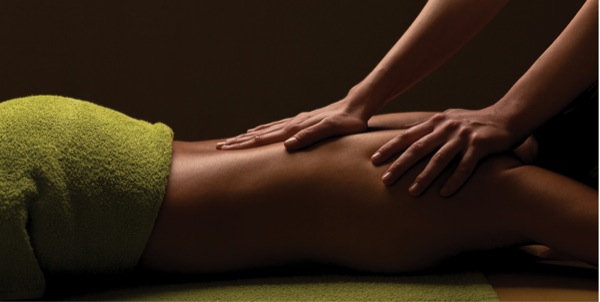
Myofascial release massage can be an ideal alternative option for many, especially if you’re looking to improve range of motion.
When most people head to their local spa to get a massage, they are generally choosing one of two options: a therapeutic (deep tissue) massage or relaxation (Swedish) massage. This is totally understandable. Many of us have wellness routines that work well, and we find value in repetition and sticking with what’s comfortable.
But sometimes, value can also be found in stepping out of the ordinary. Most spas offer a variety of additional bodywork services that may address more specific needs, or that use differing techniques which can bring about other wellness benefits.
Reiki is one great example that we offer at Serendipity Wellness Spa. Often, when regular massage clients are seeking a deeper spiritual connection from their bodywork sessions, we will introduce them to Reiki and the results are generally great.
Myofascial release massage is another popular “secondary” service that fits this bill.
Myofascial release: techniques and benefits
In a nutshell, myofascial release is a therapeutic modality that utilizes gentle, sustained pressure to facilitate deep tissue release, decrease or eliminate pain, and restore motion. It focuses on myofascial tissues, which are the tough coverings that connect and support muscles.
Unlike other types of pain, myofascial pain originates in trigger points, which are stiff areas within the myofascial tissue. This can make them difficult to identify, since the trigger points aren’t always near the perceived source of pain – which is why a different approach is needed from the therapist.

During a session (which generally last 60 minutes but can vary), the therapist applies light pressure by hand to find myofascial areas that feel stiff instead of elastic and movable. Once these areas are identified, the therapist will use various techniques to work the area – including active release, pin and stretch, IASTM (Instrument Assisted Soft Tissue Mobilization), or even foam rolling.
If trigger points are properly identified, these techniques can help loosen muscles and joints which will indirectly ease back pain. Additional sessions may be required if trigger points aren’t identified the first time around.
The benefits of myofascial release are plentiful, and may differ from those provided by traditional therapeutic or relaxation massage in some cases. They may include:
- Improved range of motion (deriving from deep trigger point relief)
- Improved circulation
- Reduced soreness and inflammation
- Maintains normal functional muscle strength
- Restoring of optimal length-tension relationships (helping with dynamic movement exercises)
- Stress relief
- Improved sleep
Myofascial release can deliver these benefits for clients in a variety of situations. If you are experiencing limited range of motion as a result of excessive repetitive motion or nerve pain, myofascial release can help restore the natural glide of your body. It can also help with areas of weakness that persist over time, those with venous inefficiency, and can even help those who experience chronic headaches.
There are a variety of other potential applications of myofascial release. Contact a licensed massage therapist for more information on if it’s the right modality for you.
If you’re interested in myofascial release, every Monday is “Myofascial Monday” at Serendipity Wellness Spa – get $10 off a 60-minute service. Click here to book now!
Supporting research and information provided by the Mayo Clinic (click here to read more).
